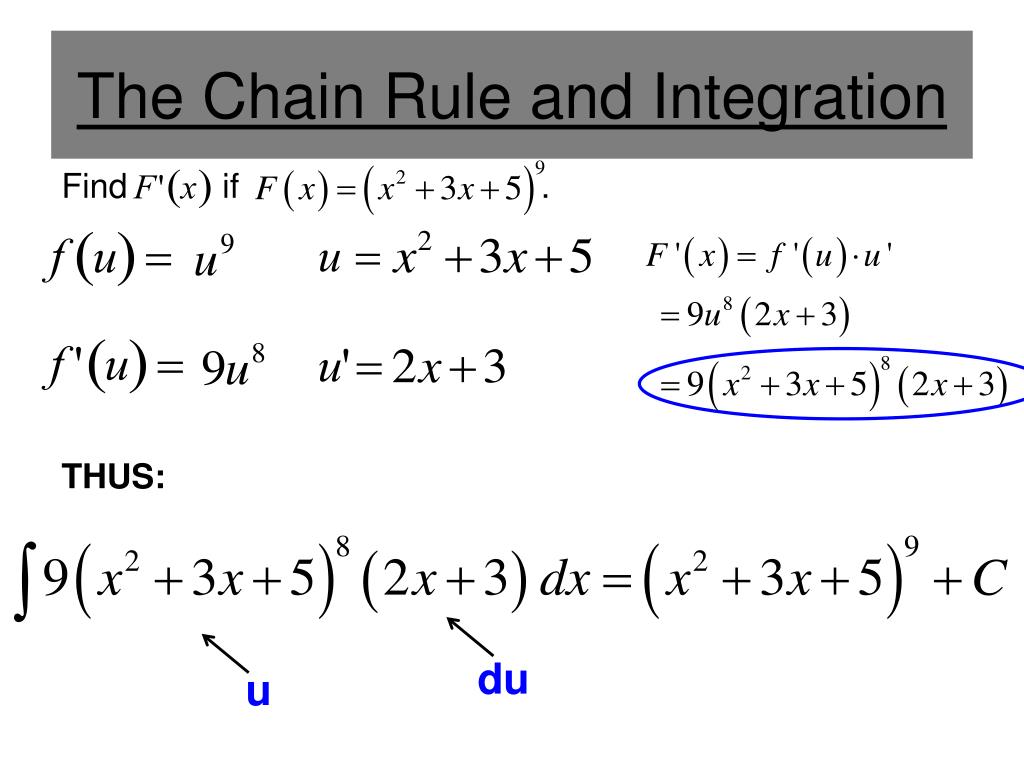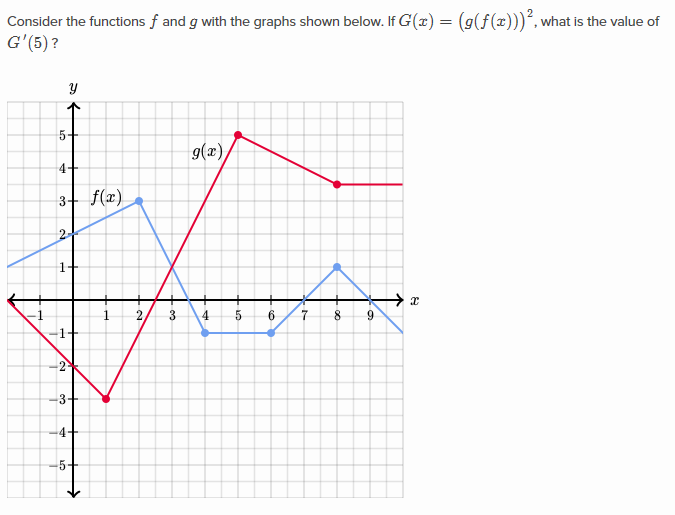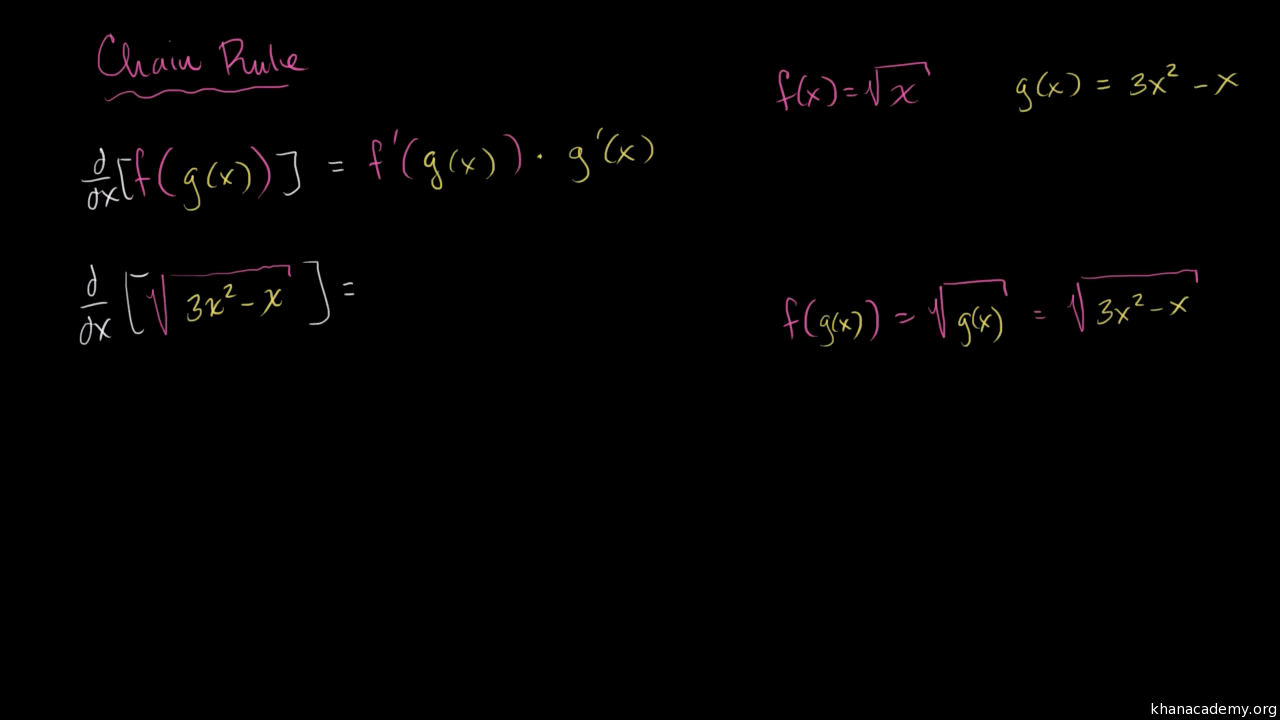Chain Rule Khan Academy
Chain Rule Khan Academy - Use the chain rule to differentiate composite functions like sin(2x+1) or [cos(x)]³. Brush up on your knowledge of composite functions, and learn how to apply. The chain rule tells us how to find the derivative of a composite function. Introduction to the chain rule. If you're seeing this message, it means we're having trouble loading external resources on our website. Learn how to apply the chain rule in calculus with this introductory video from khan academy.
Brush up on your knowledge of composite functions, and learn how to apply. The chain rule tells us how to find the derivative of a composite function. Learn how to apply the chain rule in calculus with this introductory video from khan academy. If you're seeing this message, it means we're having trouble loading external resources on our website. Introduction to the chain rule. Use the chain rule to differentiate composite functions like sin(2x+1) or [cos(x)]³.
The chain rule tells us how to find the derivative of a composite function. Introduction to the chain rule. If you're seeing this message, it means we're having trouble loading external resources on our website. Use the chain rule to differentiate composite functions like sin(2x+1) or [cos(x)]³. Learn how to apply the chain rule in calculus with this introductory video from khan academy. Brush up on your knowledge of composite functions, and learn how to apply.
Chain rule example using visual information Differential Calculus
Use the chain rule to differentiate composite functions like sin(2x+1) or [cos(x)]³. Brush up on your knowledge of composite functions, and learn how to apply. Introduction to the chain rule. The chain rule tells us how to find the derivative of a composite function. If you're seeing this message, it means we're having trouble loading external resources on our website.
Chain Rule Integration
Use the chain rule to differentiate composite functions like sin(2x+1) or [cos(x)]³. Introduction to the chain rule. The chain rule tells us how to find the derivative of a composite function. If you're seeing this message, it means we're having trouble loading external resources on our website. Brush up on your knowledge of composite functions, and learn how to apply.
filnish Blog
Learn how to apply the chain rule in calculus with this introductory video from khan academy. If you're seeing this message, it means we're having trouble loading external resources on our website. Use the chain rule to differentiate composite functions like sin(2x+1) or [cos(x)]³. Introduction to the chain rule. The chain rule tells us how to find the derivative of.
最高のコレクション integration of f'(x)/f(x) formula 654152How to get f'(x
Brush up on your knowledge of composite functions, and learn how to apply. Learn how to apply the chain rule in calculus with this introductory video from khan academy. Use the chain rule to differentiate composite functions like sin(2x+1) or [cos(x)]³. The chain rule tells us how to find the derivative of a composite function. If you're seeing this message,.
Applying the chain rule twice Advanced derivatives AP Calculus AB
The chain rule tells us how to find the derivative of a composite function. Use the chain rule to differentiate composite functions like sin(2x+1) or [cos(x)]³. Learn how to apply the chain rule in calculus with this introductory video from khan academy. If you're seeing this message, it means we're having trouble loading external resources on our website. Introduction to.
Chain Rule Integration
Use the chain rule to differentiate composite functions like sin(2x+1) or [cos(x)]³. If you're seeing this message, it means we're having trouble loading external resources on our website. Introduction to the chain rule. Learn how to apply the chain rule in calculus with this introductory video from khan academy. Brush up on your knowledge of composite functions, and learn how.
Chain rule on three functions Khan Academy Wiki FANDOM powered by Wikia
Use the chain rule to differentiate composite functions like sin(2x+1) or [cos(x)]³. Learn how to apply the chain rule in calculus with this introductory video from khan academy. If you're seeing this message, it means we're having trouble loading external resources on our website. Brush up on your knowledge of composite functions, and learn how to apply. The chain rule.
25 ++ f(x)^g(x) derivative formula 206254How to do (f+g)(x
Introduction to the chain rule. Learn how to apply the chain rule in calculus with this introductory video from khan academy. If you're seeing this message, it means we're having trouble loading external resources on our website. The chain rule tells us how to find the derivative of a composite function. Brush up on your knowledge of composite functions, and.
Chain rule proof Derivative rules AP Calculus AB
Introduction to the chain rule. The chain rule tells us how to find the derivative of a composite function. If you're seeing this message, it means we're having trouble loading external resources on our website. Use the chain rule to differentiate composite functions like sin(2x+1) or [cos(x)]³. Brush up on your knowledge of composite functions, and learn how to apply.
25 ++ f(x)^g(x) derivative formula 206254How to do (f+g)(x
Use the chain rule to differentiate composite functions like sin(2x+1) or [cos(x)]³. If you're seeing this message, it means we're having trouble loading external resources on our website. Learn how to apply the chain rule in calculus with this introductory video from khan academy. Introduction to the chain rule. The chain rule tells us how to find the derivative of.
Use The Chain Rule To Differentiate Composite Functions Like Sin(2X+1) Or [Cos(X)]³.
Introduction to the chain rule. If you're seeing this message, it means we're having trouble loading external resources on our website. Brush up on your knowledge of composite functions, and learn how to apply. Learn how to apply the chain rule in calculus with this introductory video from khan academy.

+Back+Next.jpg)







